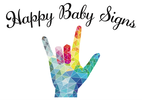 Years ago in my life coach training when my life was feeling over full and unbalanced, I was re-introduced to the PERMA model of well-being. Developed by the founder of the Positive Psychology movement, Martin Seligman, this model includes five buckets - Positive Emotions, Engagement, Relationships, Meaning, and Achievement - that comprise how we create a well-balanced life. Seligman recommends that you deliberately choose how you distribute your time and energy into the five PERMA buckets. When you feel unbalanced – when you're spending too much time in Achievement as you're meeting a goal at work, for example - you use the PERMA model to redistribute your time, energy, and attention back to what feels better. Here’s a description of each of the PERMA categories: • Positive Emotions - Making room in your life for what makes you feel good. Creating positive emotions, like contentment, peace, happiness, pleasure, joy, and excitement through what you do and by feeling optimistic. • Engagement - Having opportunities to get into what psychologist and author Mihaly Csikszentmihalyi calls flow: becoming so absorbed in an activity that you lose sense of time. • Relationships - Spending time and committing to relationships that sustain and fulfill you. • Meaning - Creating opportunities that matter to you. Focusing your attention on matters that are greater than yourself. • Accomplishment - Working on activities and projects that give you a sense of achievement. Setting and achieving goals. Everyone is different with how they distribute their “units of happiness" into the five buckets. If you have a strong drive to succeed at work, you might have more happy points in the Achievement bucket. Or maybe you find joy in helping others in your community, so when you allocate more time toward activities that bring Meaning in your life, you feel happier. I had originally learned about the flow state in college classes but hadn’t realized its importance to my happiness until I lost the time to be engaged in flow, and then found it again. The awareness of how I felt without flow compared to my happiness while in flow changed how I managed my time, and what activities I filled my time with. Making the PERMA Model Work For You Here’s an exercise so you can do to see how this works. • Download this handout of the PERMA buckets. • Now, count out 20 small items – like pennies, M&Ms, Cheerios, goldfish crackers … These items will be your “units of happiness.” • Think about a time in your life when your life felt balanced, when you felt happy. • As you think about that time, imagine how many units of happiness were going into each of the PERMA buckets. Distribute your 20 small items into the five different categories. • Make a note of your PERMA well-balanced score on the lines under the PERMA circles. • Move your units of happiness out of the way and think about your life as it is right now. How do you allocate your 20 bits of happiness? Where are you putting your most time and your most energy regularly? • Write your current PERMA score underneath your well-balanced score. What’s different? Maybe there’s a disparity between your Meaning scores. If your best balanced time came when you were volunteering each week for a cause you felt passionate about, you might feel happier now by adding more meaning into your life. What tiny, beautiful thing can you do to create more purpose in your life right now? You might see a big difference between your Positive Emotions scores. Perhaps there aren’t many options right now to create positive emotions; you’re too busy or too overwhelmed. Rick Hanson, psychologist and author of Hardwiring Happiness, says that recalling positive experiences from the past has the same positive benefit on the brain as creating new ones. Take 30 seconds once or twice a day to re-experience a positive memory, diving deep into your recollection of the event to make it vivid in your mind, allowing the positive emotions warm you up from the inside out. For me, creating more well-being in my life right now means finding time for more Engagement. Preparing the craft project for my upcoming coaching + crafts moms group helped raise my happiness quite a bit and I'm marking off time in my calendar for more creative endeavors. I'm delighted with the linked test tube vases I made. They turned out a lot like how I see my happiness and well-being: wonderfully imperfect and a bit wobbly, needing my attention to make sure they're balanced just right. Big hugs! Kathleen The Well-Crafted Mom's gathering for mothers this month is focused on finding, losing, and returning to balance again and again. The mini-retreats are made up of small groups of lovely moms who come together for conversation, compassion, and creativity. To save your spot in the Wednesday evening or Saturday mini-retreat, register here.
0 Comments
 I think it's pretty safe to assume that your inner COO is exhausted. Each of us has a part of ourselves that's responsible for building new habits, sticking with the old ones, and figuring out how to fit everything into a day. I call this inner manager the Chief Operating Officer. She's quite good at her job. She has to be. She's the one who developed the systems for you to build all your habits – the good ones and the bad. Think about all of the things you do now that take very little conscious thought, like pretty much everything in your morning routine: going to the bathroom (when you're potty training kids, you realize how much of a feat this is), getting all the shampoo out of your hair in the shower, putting on eyeliner... The list of “mindless” habits is long and continues throughout your day. But your daily habits are far from mindless – your COO has created programs for your habit, each in its own slot in your brain, ready to repeat again and again. At the beginning of the year, you might have made a long list of new habits you wanted to build. Maybe your list included adding more exercise, changing your diet so you and your family are eating better, going on more date nights so you can see your spouse as more than just a co-parent, getting a new job (or figuring out how to actually like the one you’re in). Maybe you added some self-care desires to your list, like getting a massage once a month, spending more time with your girlfriends, or taking a fun art class once a quarter. How’s it going with all that? About right now, I’m thinking your COO is more than a little overwhelmed. She’s no slacker but there's only so much she can do. And she has only a little bit of help – Willpower and Dopamine. Willpower is determined to help but she’s a bit of a delicate flower. She gets very tired very quickly and then slinks off the job to the break room. And when you go looking for her, she's half awake scrolling through Facebook with one hand with the other deep in a bag of Cheetos (even though she's the one in charge of managing the new diet). Dopamine is quite perky. Hair in a high ponytail, toothy smile, lots of clapping and bouncing. I know you know the type. When you're building a new habit, like going to the gym, Dopamine is by your side: You put on your workout clothes! Yay, you! Look at you in the new Crossfit class! This is so exciting! It feels good to have Dopamine with you, like you’re drinking free shots of happy juice at the smoothie bar. But Dopamine is easily bored. She’s not so upbeat on Day Two at the gym. Weren't we here earlier in the week? she whines as you tie your shoes. She half-heartedly claps as you complete your set of burpees, but she's clearly not as impressed as she was on Day One. Dopamine is only interested what’s new, so she soon wanders off and you’re left to trudge through your workout alone. Meanwhile, the COO is trying to manage all the new habits you’re trying to build. Her biggest challenge by far is handling the barrage of incoming messages like … • You've worked hard today. You deserve to have an easy night. Let’s order Chinese food and have it delivered. • Your daughter hates the daycare at the gym. Are you really going to be that mom that puts herself before her child? • One cookie won't make a difference in your diet. Your COO can usually handle these messages when they come one at a time, masterfully batting them away like they're irritating salespeople with inferior products to sell. But now she's can’t handle the deluge while developing the systems for all your new habits. There’s a final straw – an argument with your spouse, a really bad day at work, or a call from the principal’s office at your daughter’s school – and your COO is done for the day, maybe for the month. Definitely, she’s done for now. She's got a bad case of the "screw-its," and the diet, new exercise routine, even the motivation for planning the next date night is gone. So what do I do? I hear you cry. When there’s so much that I need to do to improve my life, be happier, be a better mom/wife/daughter/sister/employee/manager… Your list really does go on and on. You might believe that going all-in is the way to get you where you want to be, but it’s often the sure fire way to set yourself up for failure. Here's what to do instead: Pick one small thing. That’s it. One small thing from your long list of self-improvement, life-improvement, parent-improvement, work-improvement goals. Start there. What’s your one small thing? Losing 20 pounds is too big. Eating healthfully is too vague. Choose a goal that’s you think is too small to make a dent and start there, like eating a healthy lunch three days a week. When you start small, here’s what happens. • You learn to trust yourself. When you work on change bit by bit, you build self-confidence because you’re less likely to get the “screw-its.” • You’re more likely to stay on track. If/when you fall off the change train, it’s much easier to climb back on board because you’re only carrying one habit along with you, instead of a pile of self-improvement luggage. • You learn a lot about yourself – which helps you get better at building new habits. When you focus on building only one habit at a time, you can see where you’re getting in your own way, like when you listen to your thoughts that try to convince you to eat ice cream at 9:15 at night or pay attention to your inner critic’s voice that tells you that you’re not strong enough or smart enough to follow through with your plans. • You’re better able to achieve your goal. When you build a new habit step-by-step, you’re also making sure that you’re giving your inner COO the time to build strong systems that can support the new habits so they become an unconscious part of your routine. When you start small, you make sure Willpower has enough energy and Dopamine stays on board with each small step along the way. As you climb aboard the Change Train, pack light – one small carry-on habit at a time. Hugs, Kathleen Do you need some help figuring out what change you’d like to make and how to break it down into lightweight but powerful steps? Schedule a coaching session with me and we’ll create a do-able plan for your inner COO – and her assistants Willpower and Dopamine – to build. To schedule your planning session, go to The Well-Crafted Mom’s online calendar here. Use coupon code NEW50 for half-off your first coaching session with me!  If anyone had told me last year that I’d break up with Chardonnay in 2016, I would have probably laughed. Chardonnay and I had a great relationship. She soothed me when I felt frazzled. She supported me after a long day of work when dinner preparation, homework overseeing, and more work awaited me. She encouraged me in social situations when I felt awkward or dull. Perhaps I leaned on Chardonnay more than I probably should but … didn’t lots of moms? I certainly didn’t have a problem. I got everything done (and more!) than I needed to. I had stopped drinking many times in the past. It wasn’t like I needed Chardonnay. I just liked her. Very, very much. But something felt off in my relationship with Chardonnay, especially as I grew older and my hormones changed. My sleep patterns had fallen apart years before and even though I didn’t sleep any better during the nights when I drank wine in the evening and the nights when I didn’t, I wondered if my sleep would get better if I stopped drinking altogether. The amount of white wine that I drank increased, too. Only one glass became two, and sometimes even three, over the course of an evening. A few years ago, I had to let go of my friendships with Pinot Noir, Cabernet, and Merlot because of the headaches that would invariably come later in the evening after spending time in their company. But I really didn’t miss my red friends. Chardonnay was there for me. Last summer, a life coach who had a podcast I often listened to while out for my weekend walks started a program to help people stop over-drinking. Her program appealed to me because I didn’t want to stop drinking forever and ever; I wanted to be in charge of how much Chardonnay I had in my life, rather than feeling like it was the other way around. I learned a lot in the program, like how alcohol stimulates the dopamine response in your brain, so that you get a powerful reward when you drink, increasing the likelihood that your brain will want more. I learned that if your brain has a choice between what you think is best and what you crave, the cravings will always win - unless you have a compelling reason why you’re not drinking (or not drinking more than you want) and a plan to manage how much alcohol you’re consuming. I followed the coach’s steps and immediately cut down on how much Chardonnay I was consuming and then cut back even more a few weeks later. I developed a drinking protocol and a plan to follow, which meant I decided what and how much I would drink 24 hours in advance. The program was working, but I was exhausted. I was thinking about drinking even more often than before. In late October, I decided that Chardonnay and I were no longer in step and I broke up with her completely. Drinking Chardonnay had always felt like turning on my favorite Pandora station to help make the unpleasantness of my life less unpleasant. Like listening to a soundtrack that livened up my predicable routine, bolstered my discomfort, and soothed my anxiety. Drinking alcohol was like following the beat of the bass drum in the band – I didn’t notice how much something outside of me had determined the rhythm of my life until it was gone. In the quiet, what I heard, when that rhythm stopped, was this: You can't do this without Chardonnay. THIS could be anything, like getting through a noisy nighttime routine with the family after a long day of work; attending a social event with people I don't know well (or do); sitting through an excruciatingly boring obligation; or going out with girlfriends when I felt tired, depressed, and dull without Chardonnay to liven things/me up. You can't do this without Chardonnay. On the one hand (the one without a wine glass in it), I knew this statement wasn't true. I have accomplished so much without a drink in my hand or alcohol in my bloodstream – early motherhood with both of my kids, for example. Alcohol barely made an appearance while I was trying to get pregnant, was pregnant, while breastfeeding and then going through the process again with my second son. My second child nursed until he self-weaned at 20 months old, so there were years that I didn't drink. But the voice was persuasive. With Chardonnay, I could do pretty much anything. I didn’t have to wonder if I could do this without alcohol because – after 5:00 p.m. on most nights – I didn’t have to. Once I broke up with Chardonnay, the voice became determined and loud. I heard You can’t do this without Chardonnay when the election didn’t go the way that I hoped and I started worrying about what potential changes to the Affordable Care Act would do to the availability of health insurance for my family. When the other adults around the Thanksgiving table were drinking and getting merrier by the minute and I sat there, feeling stupid and dull. When an indoor snowball fight was launched at the dinner table on Christmas Eve and my sober self brought the vulnerable glassware to the sink and blew out the lit candles on the table instead of joining in. When it was time to take down the Christmas decorations, because it felt like a big, boring project and I really wanted to be doing something, anything else. When it was time to celebrate the New Year with friends at our traditional dinner on New Year’s Day and sparkling cider didn’t feel celebratory enough. I didn’t fight the voice. That was one thing I learned in the stop over-drinking program is that the more you argue with the urges, the stronger they get. Instead, when I heard the familiar rhythm of the desire to drink, I chose not to dance along. Instead, I sat still, asking myself in the kindest voice possible, the one I reserve for clients, friends, and children: What’s going on, sweetie? Why do you want to drink right now? The answers were varied: I’m bored, I’m nervous, I’m tired, I’m hungry, I’m worried, I’m overwhelmed, I’m uncomfortable … Instead of blotting out the feelings, I let them be. Interestingly enough, the discomfort didn’t get bigger. It stayed a while, happy to be listened to, and then it left. Last week, I counted how many weeks it’s been since Chardonnay and I have been together and it’s been nearly 11 weeks now. I wish I could say that my sleep is amazing and wonderful and deep and restorative. It’s not and that’s not really a surprise. What’s different for me is even better than sleep (which is a surprise because what’s better than sleep?) – I’ve learned that I’m stronger than I thought. Every time I choose to not listen to the voice that tells me I need Chardonnay to go to a party, spend time with people, get through a rough patch, or help me to feel better about my life, I grow stronger. I made it through all of the stress and social functions during the holidays without any wine. I welcomed in the New Year with sparkling grape juice shared with my family. I did hard, boring, uncomfortable things – and plan to do many more in the year to come – without Chardonnay by my side. I’m learning to like the sober me, the one who listens, marches, and sometimes dances to the rhythm of my own music. This is the soundtrack I choose to play. Happy New Year to you all. Big hugs, Kathleen P.S. Sometimes, someone else's perspective, ideas, and support is just what we need to get to a new place where we feel stronger and happier. Let me know if I can create that support for you.  Every January, I host vision board workshops for moms. They’re my most popular mini-retreats. The workshops are fun and also enlightening, too. I coach moms at my vision board workshops to not just tear pictures out of magazines of new cars, beautiful destinations, and shiny objects that they’d like to have. Instead, I lead a meditation at the beginning of the workshop to help moms get in touch with their inner guides – the wise voice within – to help choose what words and images get selected to be on the vision board. Throughout your life, you probably have heard your inner voice nudging you to do something that didn’t quite make sense or to push yourself in a way that was more than a little out of your comfort zone, like talking to a stranger while waiting for class to start – and then she ended up being your best friend. Or saying yes to an evening out with friends when you were feeling tired and thinking about staying home – and then meeting the person who became the love of your life. Looking back, it’s easy to see those moments that changed you, those times when you listened to your intuition and big events happened, especially when those changes happened when your life felt, well, maybe more like a life. As a grown-up, if you’re living a life that’s filled with the same old routines, or living a life that feels little, narrow, and unremarkable, it’s hard to believe that your inner voice has something to say. Or if she does, that it could be more than Don’t waste your money on that. Buy the generic brand, while you’re standing in the cereal aisle at the supermarket. Trust me, your wise inner guide always has something important to say. But this voice gets quiet when you stop listening, or when you hear the voice urging you to do something that sounds ridiculous, unimportant, or a waste of your precious time, and you choose to ignore it. Creating a vision board helps you to get clear on what your inner wise woman wants. Whether it’s a feeling, an attitude, or an experience, the collage is a way to hear what your deepest self desires. In past workshops, my clients have made gorgeous, fanciful, and creative vision boards. As they leave, I tell them to hang their vision boards in a visible location as a reminder of what their essential self wants to tell them. For most people, that’s where the vision board project ends. But creating the vision board is only the beginning. My inner voice – and the inner voices that my clients hear – always ask us to do something. Get outside. Call an old friend. Make a right turn. Go out with the girls. Pull out the art supplies. The vision board is just your starting place. The next step is to do. This past Fall, I coached moms in one-on-one vision board workshops and then in three follow-up sessions. By watching my clients, I learned that making a vision board isn’t enough. I coached moms to help them work through whatever obstacles were in their paths, whether it was a lack of time, a lack of confidence, or a lack of direction. The moms transformed their vision boards from a two-dimensional piece of cardboard with words and pictures glued onto it into little steps and big leaps forward in their real lives. And real things happened: new jobs, new focus on creating community, new ways of refreshing a stale marriage, new confidence and clarity, and more changes. Is it your turn to transform your vision board into real life change? Make a vision board with me at one of my workshops in January and you’ll be eligible to sign up for the Manifest 2017 program that follows. For three weeks after the vision board workshop, you’ll get support for using your vision board as a starting place for manifesting what you – and your inner guide – want in 2017. In small group support calls, you’ll learn new ways to work through whatever is in the way of what you want. You’ll get real-time answers to your questions in a private Facebook community, plus you’ll be inspired and supported by the other mamas in your group. In the Manifest 2017 program, you’ll also get a private session with me for in-depth coaching and solutions tailored just for you. I’m keeping the group deliberately small so space in my Vision Board workshops and the Manifest 2017 program is limited. Since this is a brand new program, I’m offering it at a deep discount, too. To register or for more information, go to thewellcraftedmom.com/mini-retreats. I hope you can join us to bring to life what you really truly want in 2017. If you have questions about the program or about working with me, feel free to email me and we’ll set up a time to chat. Hugs! Kathleen  A friend of mine asked me last week if I was ready for the holidays. Ready? I haven't even started. Have you? It's October and I already feel like I'm behind schedule. On Sunday, Bill and the boys put up the Halloween decorations – with only a bit more than one week to spare. We then headed off to the Halloween super store late in the day, picked up a few things for the boys’ costumes and then hit the Goodwill for inspiration and other supplies. Creating unique costumes with my boys is a fun project but I’ve got a deadline of Friday evening for the oldest boy’s outfit since he wants it finished before his martial arts school’s Halloween party that night. Creating my sons' costumes is just one deadline among many: promoting the Signs of a Happy Baby book for its launch in bookstores in May; working with my coaching and body therapy clients; shifting the name of my business completely from Touch Blue Sky to The Well-Crafted Mom before my business tax certificate expires (which so far has involved talking to the City and County of San Mateo, the California Massage Therapy Council, and the San Mateo Police Department and the project is still not done); and for some reason I decided that now would be a good time to paint my home office so I’m sitting in my office this morning in the dark, illuminated only by the light of my computer screen since all the light fixtures are unplugged and the furniture is pushed to the center waiting for the painter to come this afternoon. And then, every year, the holidays add a big pile of more onto an already full plate. When I think about what’s coming in the next few months, I’ve considered having a full-blown meltdown, toddler style. But last week, a light bulb went off: What if I started acting like a toddler? Like how my boys behaved when they were three-and-a-half and life just handed them too much to handle? WWMTD? (What would my toddler do?) With WWMTD in mind, I created a happier holiday guide with four life lessons from toddlers. The life lessons spell out GASP because I’d like to encourage you all (and repeatedly remind myself) to come up for air and take a deep, delightful breath during the holiday season. Here are the steps for making the holidays happier (for you and everyone else): • Get help. I have a dear, smart friend who I call "Kristy with a K" (because I also have another dear, smart friend named "Christy with a C”) who listened to me whine/share about my to do list and offered to help. Kristy has this magical way of organizing everything that I have to do and she helped me to prioritize my tasks in a way that made my to do list much more manageable. (It's all about Sharpies and sticky notes, folks.) Yesterday, she returned to work alongside me at the dining room table. She edited documents for the online media kit (is there anything this girl can’t do?) while I worked on the new Happy Baby Signs website. A few years ago, I wouldn’t have accepted Kristy’s offer to help. I would have found a way to politely decline, explaining that I was too busy. In reality, I would have been too embarrassed to admit that I needed help. I still struggle with accepting help and even more with reaching out and asking for it. The chorus of voices in my head loudly insist that I should have my schedule figured out, I should know how to organize my time, I coach people how to do this, for goodness sake! The negative thought that I should have everything all figured out doesn't serve me. I have another self-defeating thought that my successes don't count unless I do everything by myself. But this thought is dead wrong. Instead, these thoughts keep me stuck and prevent me from learning anything new. I’m discovering that graciously receiving help – instead of shoving it away – gets easier each time I do it. My goal for the holidays is to get lots of practice with asking and accepting help. • Ask why. Before you say yes to another commitment, whether it’s helping out at the holiday fair or attending the Christmas party at your office, ask why like a toddler. Why do you want to go? Why do you want to spend time doing this thing instead of doing something else? Why are you feeling obligated? Why can’t you just stay home? Asking why is particularly important around family obligations that may not fit with your new lifestyle as a parent. Your traditional plan to leave your in-laws’ home first thing on Christmas morning to get to your parents’ home three hours away in time for lunch may have been fine when you and your spouse were child-free. But now, with a toddler and baby in tow, the time in the car plus the overstimulation of the holiday plus the lack of naps might end up creating the most dismal of days. Hot Tip: The question, “Why are we doing this?” is much better asked ahead of time and not midway through the three-hour drive/six-hour plane ride/formal family dinner at a fancy restaurant with children who have already melted down and are past the point of redemption. • Say no. Saying no is hard. We don’t want to disappoint other people, especially close family and friends. However, as author Brené Brown reminds us, “Momentary discomfort is better than long-term resentment.” Toddlers know how to say no quite well. This holiday season, channel your inner toddler and say no. Repeatedly. “No, I don’t want to take on another commitment right now.” “No, thank you. We’re busy that night.” “No, we’ve decided to stay home on Christmas Eve and start a new holiday tradition with the kids.” No. Nope. Nada. Make room for yourself and your family to enjoy the holidays by saying no – as best as you can – to what doesn’t delight and excite you. • Play first. How much fun do you allow yourself to have during the holidays? Do you tell yourself that you’ll get on the floor and play with your kids AFTER the dishes, AFTER you put the load of clothes in the washing machine, AFTER the house is all spic-and-span? How much are you missing by relegating your fun to AFTER? I teach my clients tips and tools on how to masterfully delegate and ditch tasks so that they have the time to play. Start by letting go of what doesn't feed your soul or feed your family, whether it's a clean-enough-for-company house (I quote Dr. Seuss and tell myself that the people who mind don't matter and the people who matter don't mind) or perfectly wrapped presents (go for gift bags!) Let what feels like fun guide you through the holiday season. Can your introverted self find a moment with some spiced cider to sit and warm your toes in front of the fire while your hubby puts the kids to bed – and warm up a cup for him as he joins you once they're asleep? Can you find a carefree afternoon or evening to window shop with your very best girlfriend? Are there enough leaves in your backyard to make a big pile to play in with your toddler – and then bring a handful of the most colorful leaves inside so you both can get messy gluing them onto construction paper to decorate the house? Experts say that children are our best teachers. Take a deep breath and let your inner toddler show you the way to happier holidays. Big hugs, Kathleen Want more help? Are you feeling overwhelmed already? Wondering how you’re going to say “No, thank you” to what you really, really don’t want to do? Need some new tools in your tool belt to get you through the next few months? Let me help you through the holidays with one-on-one support to give you support, ideas, and resources to deal with the obstacles that your life, job, extended family, spouse, and kids throw your way – so you can have the best and happiest holiday season ever. Sign up for your personal support here. Or get ideas and support at my November groups for moms on Saturday, November 12th and Wednesday, November 16th. Save your spot at thewellcraftedmom.com/mini-retreats. |
AuthorWrite something about yourself. No need to be fancy, just an overview. Archives
August 2019
Categories |

 RSS Feed
RSS Feed